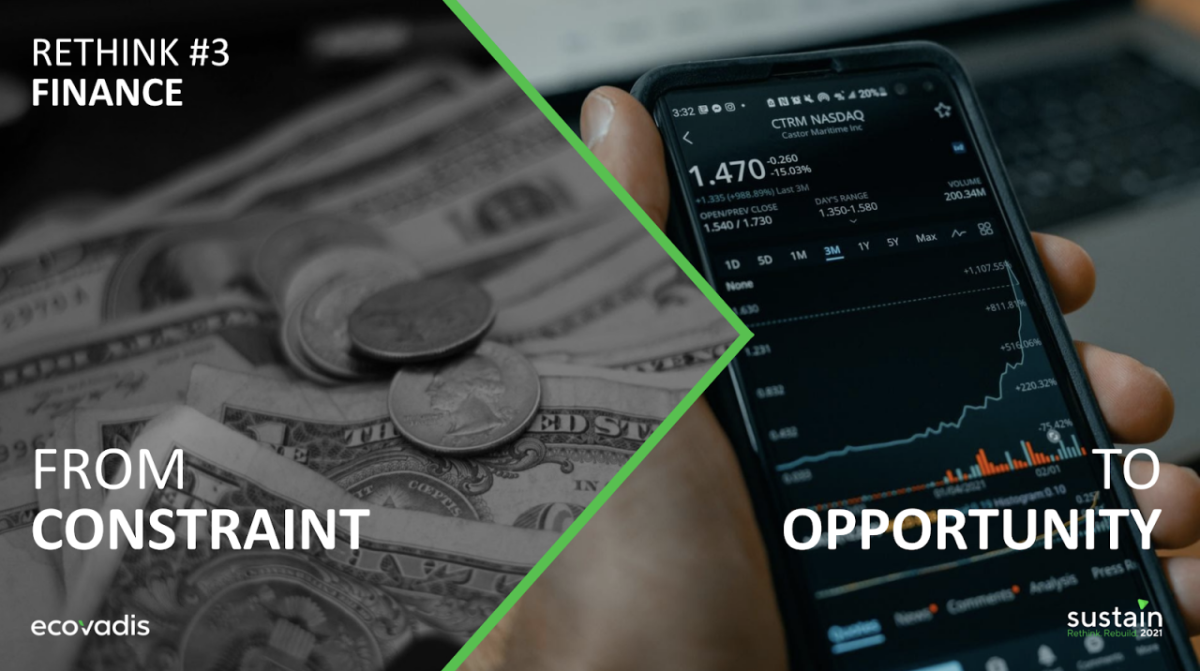Time to Rethink Finance With an Impact Lens: From Constraint to Opportunity

For years, the financial landscape for sustainability has been plagued by bottlenecks, constraining much-needed action. Sustainability projects were frequently held up, for example, because Chief Financial Officers (CFOs) were wary of “too long a time-to-ROI”.
But the pandemic has created space for a new mentality, to shift “from constraint to opportunity” and things are changing fast. In fact, experts say that sustainability is the biggest economic opportunity of our time.
The rapid influx of capital to ESG funds has grabbed headlines, but this is just the tip of the iceberg – ESG funds only address the top 10,000 listed companies worldwide. There remains an enormous opportunity to bring financial incentives linked to sustainability to the estimated five million businesses in global supply chains, many of which are not listed or are small to medium-sized businesses. Major financial institutions like JP Morgan, ING, and FinTechs like Taulia are already working with global multinationals to integrate sustainability ratings into their lending and financing offers, particularly for finance going to unlisted and small and medium-sized companies in those supply chains.
How will you transform your portion of this $17 trillion to leverage finance to sustainably grow your supply base? The most efficient programs align ESG tools and metrics with sustainable procurement programs. This way, you can create incentives – like reduced financing rates – for suppliers that have good sustainability performance. This represents a powerful opportunity to mobilize your peers across procurement and finance, and to rally your corporate branding and marketing teams around launching or rebuilding your sustainable procurement program for major impact.
Read more on this and the other Four Factors to Rethink in Global Supply Chains So We Can Rebuild Better.

